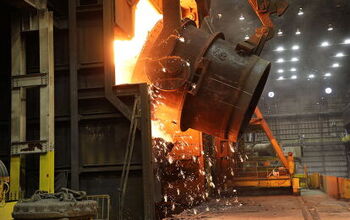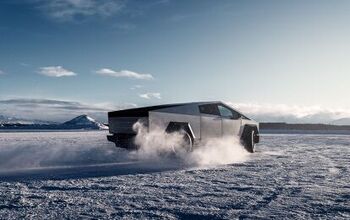Tesla Faces Backlash Over Autopilot Technology in Wake of Crash

Safety advocates are claiming Tesla’s reputation as a leading innovator in the automotive world could breed overconfidence in its new technology, putting drivers in danger.
The May 7 death of a Tesla driver whose vehicle collided with a tractor trailer while in “Autopilot” mode sparked renewed calls for proper vetting of advanced technology in production vehicles — especially if the technology allows the vehicle to drive itself.
Joshua Brown was killed on a Florida highway after his 2015 Tesla Model S’s Autopilot mistook a brightly-lit tractor trailer crossing the highway as the sky. The autonomous driving system didn’t react to the obstacle, leading to a fatal collision. The National Highway Traffic Safety Administration is now investigating the Model S and its Autopilot system.
Following the crash, the truck’s driver, Frank Baressi, claimed the victim was watching a movie at the time of the crash, saying he could hear the film Harry Potter playing from the Tesla’s wreckage.
Tesla vehicles can’t play videos on their infotainment screens, but Reuters now reports that the Florida Highway Patrol found a portable, aftermarket DVD player in the wreckage of Brown’s vehicle. Brown was a great fan of Tesla and its Autopilot technology, uploading many dashcam videos to his YouTube page, including one showing the system avoiding a collision with a truck earlier this year.
Police said no video recording device — mounted to the dash or elsewhere — was found in the wreckage.
Tesla markets the Autopilot system as a driver’s aid, maintaining that drivers still need to be aware of their surroundings and ready to respond to danger while the system is activated. The mere presence of the technology, however, could lead to overconfidence in its abilities.
Speaking to Bloomberg, Jackie Gillan, president of Advocates for Highway and Auto Safety, criticized the practice of “beta” testing — having consumers test and help improve new technology through real-world use.
“Allowing automakers to do their own testing, with no specific guidelines, means consumers are going to be the guinea pigs in this experiment,” said Gillan. “This is going to happen again and again and again.”
Joan Claybrook, automotive safety advocate and former NHTSA director, said the “trial-and-error technique” is a threat to public safety.
“The history of the auto industry is they test and test and test,” she told Bloomberg. “This is a life-and-death issue.”
Expect the Florida crash to make other automakers extra cautious about perfecting their own autonomous driving technology (or semi-autonomous driving aids) before making it available in production vehicles. In March, NHTSA administrator Mark Rosekind gave the regulator a six month timeline in which to create federal rules for self-driving cars.
[Image: Tesla Motors]

More by Steph Willems
Latest Car Reviews
Read moreLatest Product Reviews
Read moreRecent Comments
- SaulTigh Unless we start building nuclear plants and beefing up the grid, this drive to electrification (and not just cars) will be the destruction of modern society. I hope you love rolling blackouts like the US was some third world failed state. You don't support 8 billion people on this planet without abundant and relatively cheap energy.So no, I don't want an electric car, even if it's cheap.
- 3-On-The-Tree Lou_BCone of many cars I sold when I got commissioned into the army. 1964 Dodge D100 with slant six and 3 on the tree, 1973 Plymouth Duster with slant six, 1974 dodge dart custom with a 318. 1990 Bronco 5.0 which was our snowboard rig for Wa state and Whistler/Blackcomb BC. Now :my trail rigs are a 1985 Toyota FJ60 Land cruiser and 86 Suzuki Samurai.
- RHD They are going to crash and burn like Country Garden and Evergrande (the Chinese property behemoths) if they don't fix their problems post-haste.
- Golden2husky The biggest hurdle for us would be the lack of a good charging network for road tripping as we are at the point in our lives that we will be traveling quite a bit. I'd rather pay more for longer range so the cheaper models would probably not make the cut. Improve the charging infrastructure and I'm certainly going to give one a try. This is more important that a lowish entry price IMHO.
- Add Lightness I have nothing against paying more to get quality (think Toyota vs Chryco) but hate all the silly, non-mandated 'stuff' that automakers load onto cars based on what non-gearhead focus groups tell them they need to have in a car. I blame focus groups for automatic everything and double drivetrains (AWD) that really never gets used 98% of the time. The other 2% of the time, one goes looking for a place to need it to rationanalize the purchase.


































Comments
Join the conversation
Coming here late: Looks like everyone has thoroughly commented on this "backlash" issue. Already gave some perspectives on this technology in the first Tesla post: http://www.thetruthaboutcars.com/2016/06/nhtsa-investigating-tesla-model-s-following-fatal-autopilot-crash/ Please check these experiments, data, analysis we had done in the late 1990's in the link above. Just some emphasis: 1) There is no such thing now as a completely autonomous vehicle, and will not be reliably available earlier than perhaps 2025-2030. It is foolish to pretend otherwise. 2) One real test of what defined an "autonomous vehicle" in 2004 is recapped here: "The ultimate success of AI-based vehicle systems was judged to be SLEEP! If you can take a nap and/or have NO ability or desire to intervene, — EVER — then the AI system would be seen as successful as your being a passenger with a competent spouse (or others) doing the driving." 3) A real autonomous vehicle will have to handle a white-out snowstorm with pavement substrate coated with ice. (Not simple, but yes, I drive successfully, albeit awkwardly, in this stuff routinely in January and February in WI.) 4) Toyota and some others are to be praised for going slow and thorough with testing this technology. In fact, BMW had this to say: "On this very topic, BMW (CEO Harald Krueger) just announced BMW will be the “#1 in autonomous driving” — but in 2021 and beyond. His comment was that current technology is just not ready for “serious production”. And: “we need those next years”. http://www.autonews.com/article/20160701/VIDEO/307019998/autonews-now-fca-ford-nissan-gain-in-june-toyota-gm-slip?cciid=email-autonews-anno" 5) Tesla's use of the triumphalist term, "Autopilot" may have been unfortunate. Psychologically, to me at least, it implies more capability than actually exists, and others may feel greater confidence in the current Tesla system than is wise. As some have pointed out, a more restrained, less absolute, perhaps less bravado-filled term may have been better. 6) Heuristic computer systems, taught to anticipate future events in difficult traffic/road situations, --- coupled with five (5) types of "surround sensing" and GPS road-location capability --- will be essential for approaching AND exceeding "proper" human accident-avoidance capability, but it can eventually be done. Will that be inexpensive and add just a mere $5,000 to the price of a vehicle? Probably not. ====================
I can only say what people smarter that me said half a decade ago: this _will_not_work_, semi-autonomous driving doesn't work when it is immersed in a sea of regular cars. We either make the switch completely (outlaw all cars that are not autonomous) or stop offering potentially dangerous technology. Where is Ralph Nader when you need him? And yes, I am referring to Isaac Asimov's Sally (1954)